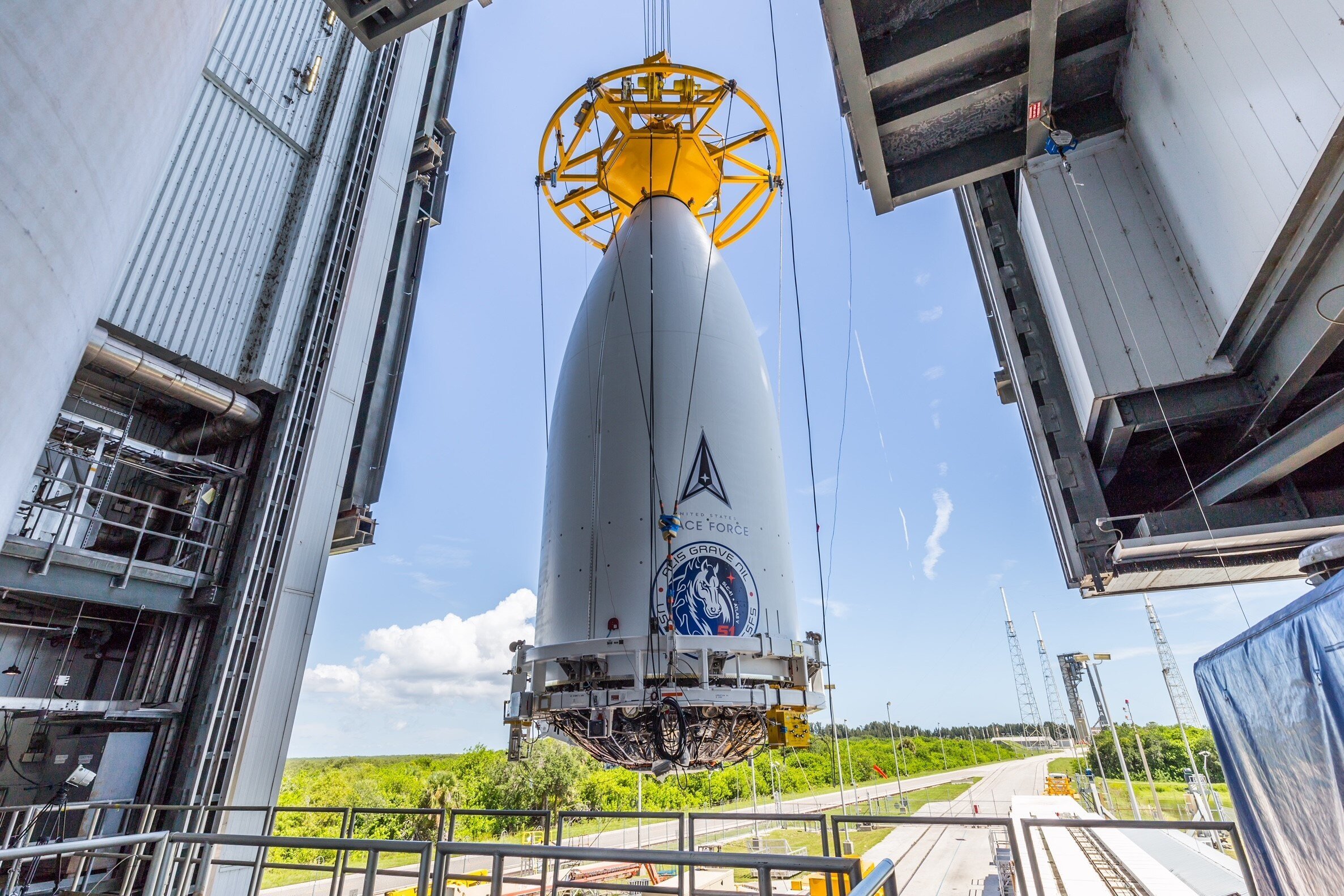
The milestone 100th launch in service to U.S. national security by United Launch Alliance (ULA) is in the final stages of preparations for ascent into space on July 30 from Cape Canaveral Space Force Station (CCSFS) in Florida.
ULA will use an Atlas V 551 rocket to launch the classified USSF-51 mission for the United States Space Force’s Space Systems Command (SSC).
Stacking of the 196-foot-tall (60-meter) rocket began June 25 when the first stage was trucked from ULA's Horizontal Integration Facility (HIF) to the Vertical Integration Facility-G (VIF-G) adjacent to Space Launch Complex (SLC)-41 for hoisting aboard the Mobile Launch Platform.

Powered by refined kerosene propellant, the stage’s main engine will generate 860,200 pounds (3.83 mega-Newtons) of thrust to propel the Atlas V out of the atmosphere during the initial minutes of flight.
The following days were spent installing five GEM 63 solid rocket boosters (SRBs) on the sides of Atlas V. The 66-foot-long (20-m) boosters will be ignited at liftoff to augment the first stage and provide two-thirds of the power at launch, each delivering 371,550 pounds (1.6 mega-Newtons) of thrust for approximately 90 seconds.  The Centaur upper stage was lifted into the VIF and connected to the first stage on July 2. The cryogenic stage's single RL10C-1-1 engine—a new and higher performing variant of the venerable engine family—burns liquid hydrogen and liquid oxygen to produce 23,825 pounds (106 kilo-Newtons) of thrust.
The Centaur upper stage was lifted into the VIF and connected to the first stage on July 2. The cryogenic stage's single RL10C-1-1 engine—a new and higher performing variant of the venerable engine family—burns liquid hydrogen and liquid oxygen to produce 23,825 pounds (106 kilo-Newtons) of thrust.
The USSF-51 payload arrived at the VIF on July 17 and was lifted atop the rocket to complete assembly of the launch vehicle. It is encapsulated in a 17.7-foot-diameter (5.4 m) composite payload fairing measuring 68 feet (20.7 m) in height.
This Atlas V rocket, designated AV-101, will weigh 1.29 million pounds (587,000 kg) once fully fueled for liftoff. It leaves the pad on 2.7 million pounds (12 megaNewtons) of thrust.
The Atlas V 551 is the highest performance configuration of the rocket family with a full complement of five solid rocket boosters. It first flew in 2006 and has launched the New Horizons spacecraft to Pluto, the Juno orbiter to Jupiter and multiple national security payloads.
The USSF-51 mission marks the conclusion of national security launches using the Atlas V fleet as ULA transitions to the next generation, highly flexible Vulcan rocket for continued access to space.
Atlas V served the Air Force, Space Force and National Reconnaissance Office for 17 years with 100 percent launch success, accomplishing missions to low-, medium-, transfer and geosynchronous orbits across the entire performance range of the Atlas V configurations.

ULA continues as a steadfast partner to the Space Force, fulfilling the rigorous, unique requirements needed to launch tremendous capabilities safely and successfully into space for our national defense and the protection of the country’s allies around the world. We have delivered 99 national security missions to orbit successfully since the company was created in 2006, representing 62 percent of our flight history, using Atlas V, Delta II and Delta IV rockets.
Our launch record played a key part in the successful recapitalization effort to modernize and upgrade the full breadth of U.S. capabilities in space, advancing communications, overhead surveillance and navigation systems that serve the warfighter in harm’s way.

Space is the new battlefield high ground; a strategic warfighting domain and space launch is a strategic national capability. ULA is unleashing the energy of American ingenuity by developing Vulcan to meet our nation’s need for expanding space missions.
Vulcan incorporates the best of the legacy Atlas and Delta rockets to create one launch solution that is adaptable, affordable and meets the full spectrum of needs demanded by complex national security satellite deployment missions.
Learn more about the Atlas V USSF-51 launch
See our USSF-51 photo album

 Back To Blog List
Back To Blog List



